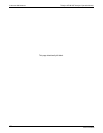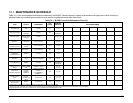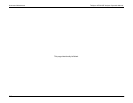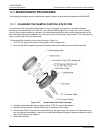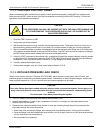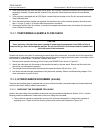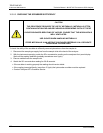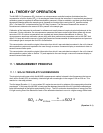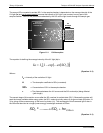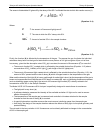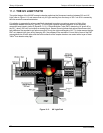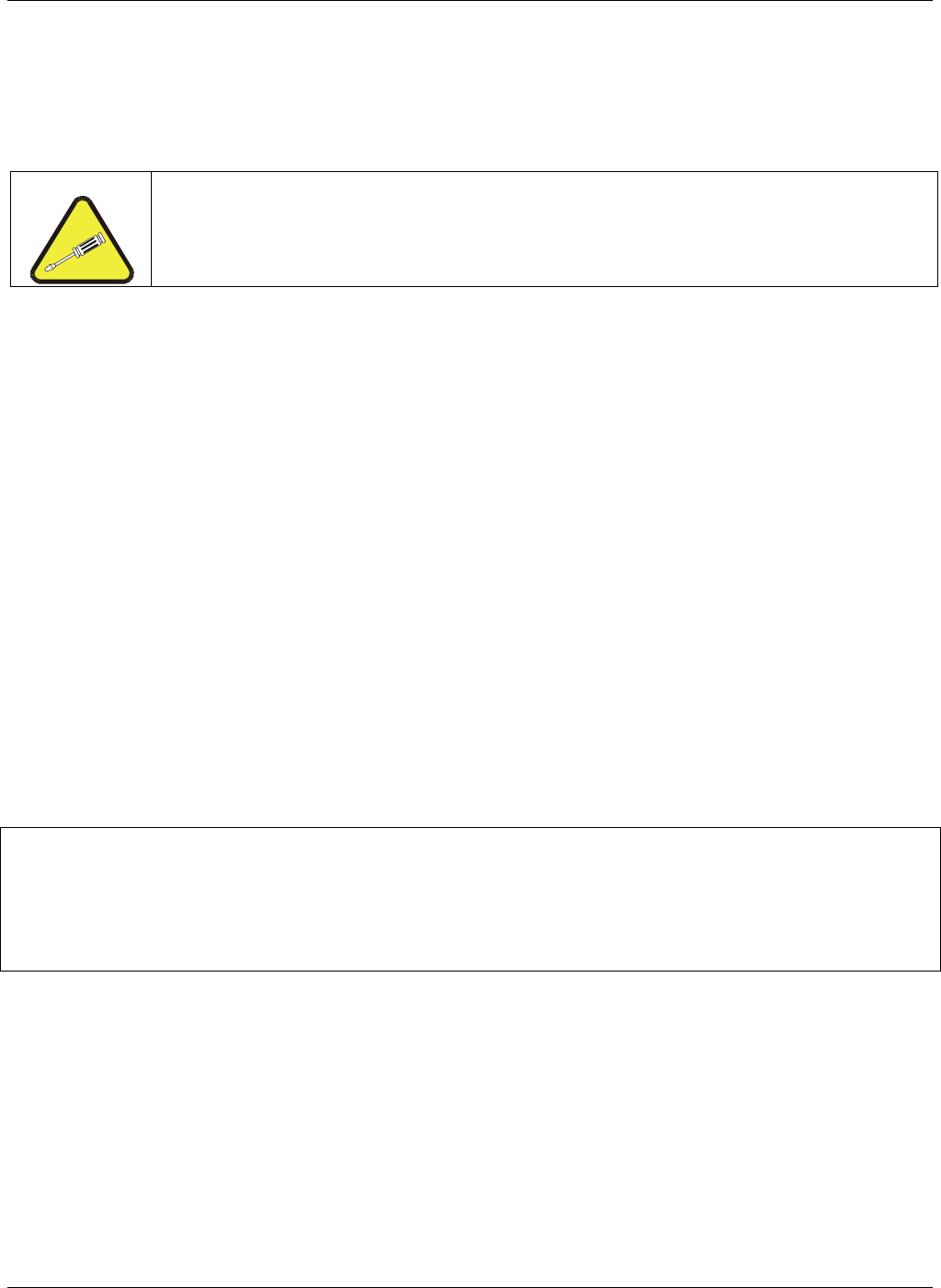
TELEDYNE API
Technical Manual - M100E UV Fluorescence SO2 Analyzer Instrument Maintenance
215
10.3.5. CHECKING FOR LIGHT LEAKS
When re-assembled after maintenance of repair or when operated improperly, the M100E can develop small
leaks around the PMT, which let stray light from the analyzer surrounding into the PMT housing. To find such
light leaks, follow the below procedures:
CAUTION
THIS PROCEDURE CAN ONLY BE CARRIED OUT WITH THE ANALYZER RUNNING AND
ITS COVER REMOVED. THIS PROCEDURE SHOULD ONLY BE CARRIED OUT BY
QUALIFIED PERSONNEL.
1. Scroll the TEST functions to PMT.
2. Supply zero gas to the analyzer.
3. With the instrument still running, carefully remove the analyzer cover. Take extra care not to touch any of
the inside wiring with the metal cover or your body. Do not drop screws or tools into a running analyzer!
4. Shine a powerful flashlight or portable incandescent light at the inlet and outlet fitting and at all of the joints
of the sample chamber as well as around the PMT housing. The PMT value should not respond to the light,
the PMT signal should remain steady within its usual noise performance.
5. If there is a PMT response to the external light, symmetrically tighten the sample chamber mounting screws
or replace the 1/4” vacuum tubing with new, black PTFE tubing (this tubing will fade with time and become
transparent). Often, light leaks are also caused by O-rings being left out of the assembly.
6. Carefully replace the analyzer cover.
7. If tubing was changed, carry out a leak check (refer to Section 10.3.6).
10.3.6. DETAILED PRESSURE LEAK CHECK
Obtain a leak checker similar to Teledyne API P/N 01960, which contains a small pump, shut-off valve, and
pressure gauge to create both over-pressure and vacuum. Alternatively, a tank of pressurized gas, with the two
stage regulator adjusted to ≤ 15 psi, a shutoff valve and pressure gauge may be used.
CAUTION
Once tube fittings have been wetted with soap solution under a pressurized system, do not apply or re-
apply vacuum as this will cause soap solution to be sucked into the instrument, contaminating inside
surfaces.
Do not exceed 15 psi when pressurizing the system.
1. Turn OFF power to the instrument and remove the instrument cover.
2. Install a leak checker or a tank of gas (compressed, oil-free air or nitrogen) as described above on the
sample inlet at the rear panel.
3. Pressurize the instrument with the leak checker or tank gas, allowing enough time to fully pressurize the
instrument through the critical flow orifice.
Check each tube connection (fittings, hose clamps) with soap bubble solution, looking for fine bubbles.
Once the fittings have been wetted with soap solution, do not re-apply vacuum as it will draw soap solution
into the instrument and contaminate it.
Do not exceed 15 psi pressure.
04515F DCN6048




